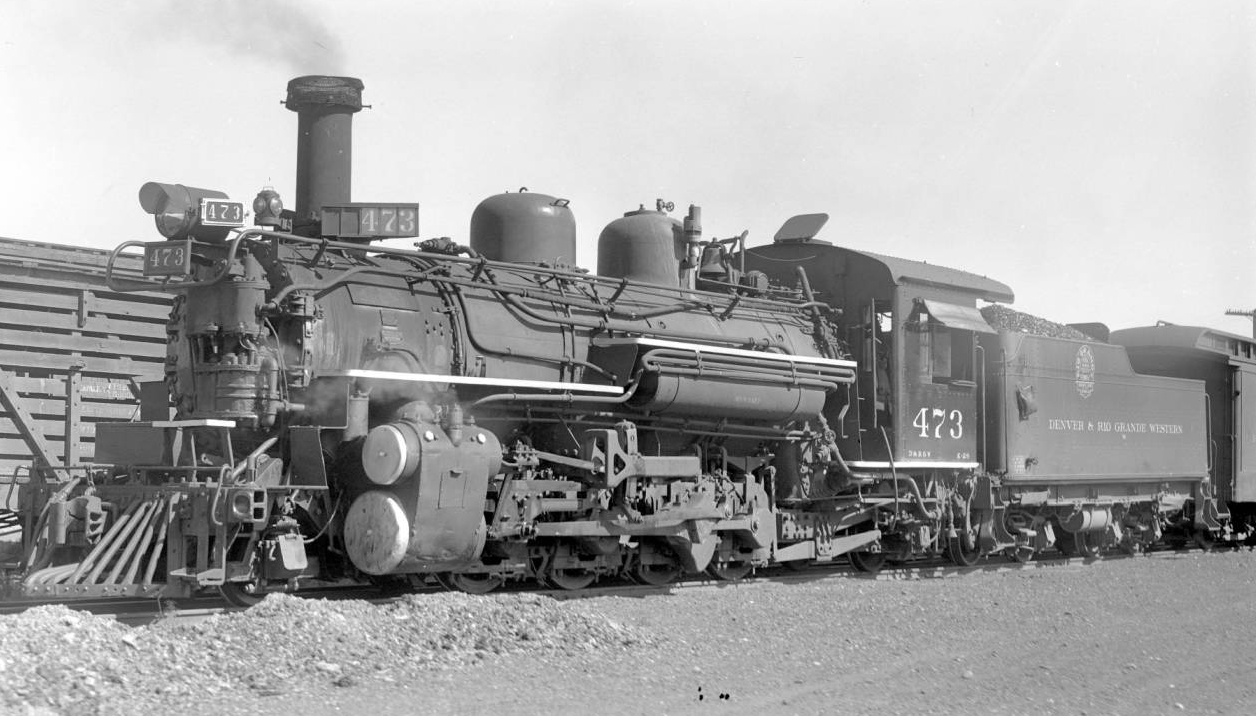D&RGW 473 was lucky unlike her sister locomotvies whose fate was far more severe as she was not sold to the US army and sent to the White Pass and Yukon Railway in Alaska. Today 473 is in service on the Durango and Silverton and 476 is in the Museum at Durango awaiting major repairs, with 478 currently being rebuilt. The photo below shows 473 in 1937.
D&RGW 473 was one of ten locomotives built in 1923 by the American Locomotive Compnay (ALCO) and designated as a class K-28. The wheel configuration was 2-8-2 and the driving wheels were 44 inches in diameter. The total weight of the locomotive on the drivers was 51.5 tons or 113,500 lbs. and the tractive effort was 27,540 pounds-force.
Spark arrestors were fitted to the chimney in Durango to prevent forest fires.
Despite being smaller than the K-36 class locomotives, a little older and less powerful, the engine crews tend to favor a trip on these engines because the design ALCO used was superior in balance and servicing. Firing can be tricky when the engine is working hard, as the clamshell-style firedoors tend to pull into the backhead of the boiler due to the draft, and if any flues in the boiler are leaking, the loss of draft on the fire is much harder to work around than on the K-36 locomotives. Firing while the engine is working hard is done with a large “heel” pattern, generally with as little coal on the flue sheet as possible, and gradually sloping the fire bed towards the door sheet to the height or higher than the firedoors. This results in the draft being forced through the fire bed in the thinner areas towards the flue sheet, which usually is hindered by the lack of draft between the grates and the arch brick. New firemen sometimes have a hard time learning this because there are fewer training hours available on the K-28 class locomotives compared to the railroad’s usual K-36 workhorses which have a larger firebox and are more forgiving of poor technique.
D&RGW 473 served frequently on the Chili Line that operated between Antonito, Colorado and Santa Fe, New Mexico until it was abandoned in 1941.
- Photographed: Antonito, Colorado, 5 July 1937. Photo from the Denver Public Library Archive

